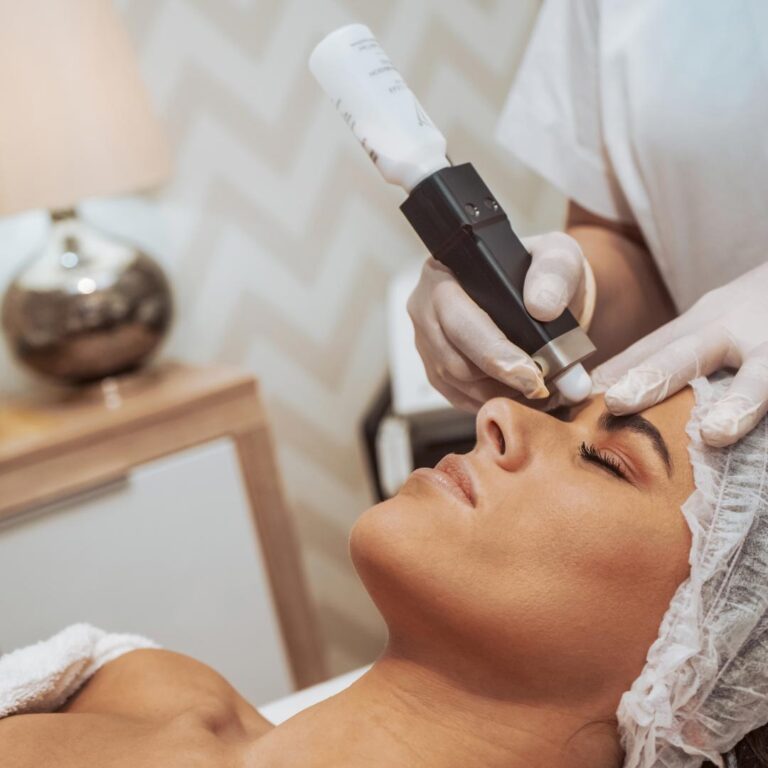Why the Source of Exosomes Matters
Choosing the Right Brand for Skin and Hair Treatments
When it comes to exosome therapy for skin rejuvenation and hair growth, not all exosomes are created equal. The source of these tiny extracellular vesicles plays a critical role in their efficacy, safety, and consistency. At JuveXO®, we’ve built our reputation on sourcing exosomes from umbilical lining stem cells (ULSCs), a decision rooted in over a decade of research.
Here’s why the source matters:
The Science of Exosome Sources
Exosomes are packed with bioactive molecules—growth factors, microRNAs, and proteins—that drive cellular communication and tissue repair. Their effectiveness depends heavily on the cells they’re derived from. After extensive study, the scientific team behind JuveXO® evaluated numerous mesenchymal stem cell (MSC) sources, focusing on colony-forming efficiency, telomere length, and telomerase activity. The result? ULSCs emerged as the gold standard, outshining alternatives like fat-derived MSCs, bone marrow-derived MSCs, and plant-derived exosomes.
Drawbacks of Plant-Derived Exosomes
Plant-derived exosomes are gaining buzz in the cosmetics world for their ethical appeal and lower production costs. However, they fall short for practitioners seeking clinical-grade results. A study in Cosmetics (2025) notes that while plant exosomes may offer some anti-inflammatory benefits, their molecular cargo lacks the complexity and potency of human-derived exosomes, limiting their impact on skin repair and hair restoration. For example, they don’t naturally carry human-specific growth factors like IGF-1 or VEGF, critical for stimulating keratinocyte proliferation or follicular activity. This makes them a weaker choice for anti-aging treatments or robust hair loss solutions.
Limitations of Fat- and Bone-Derived Stem Cells
Fat-derived (adipose) and bone marrow-derived MSCs are common exosome sources, but they have significant drawbacks compared to ULSCs. Research shows that these cells exhibit shorter telomere lengths and reduced telomerase activity as donors age, leading to lower potency and variability in exosome output [source: Stem Cells International, 2016]. Fat-derived MSCs, while abundant, often yield exosomes with inconsistent bioactive profiles due to donor-specific factors like lifestyle or health status. Bone marrow-derived MSCs, though potent in younger donors, decline in proliferative capacity over time and require invasive harvesting, increasing costs and ethical considerations. For practitioners, this translates to unpredictable results in skin hydration or hair density treatments.
Why ULSCs Are Superior for JuveXO® Exosomes
JuveXO’s® exosomes come from umbilical lining stem cells (ULSCs), a breakthrough discovered after rigorous comparison of MSC sources. ULSCs boast higher colony-forming efficiency, longer telomere length, and elevated telomerase activity, ensuring a robust, youthful exosome profile [source: JuveXO® foundational research, aligned with MSC studies]. Sourced ethically from postnatal umbilical cords with informed consent, ULSCs deliver exosomes with unparalleled consistency and bioactivity—50 billion per mL in our ExoCM™ formula. This potency may drive faster skin rejuvenation, enhanced hair growth, and measurable improvements in patient outcomes, setting JuveXO® apart as a leader in exosome therapy.
The JuveXO® Difference: Science Meets Results
Our journey began with a decade of research into stem cell therapy, pinpointing ULSCs as the optimal source for cosmetic exosomes. Unlike plant-derived options, JuveXO® exosomes carry human-specific growth factors and peptides tailored for skin anti-aging and hair restoration. Compared to fat- or bone-derived MSCs, ULSCs offer superior stability and efficacy, minimizing variability and maximizing clinical impact. Crafted in an FDA-registered facility, our ExoCM™ blend combines these exosomes with LL37, Biotin, and High Molecular Weight Hyaluronic Acid, Collagen I and III, Niacinamide, and other peptides amplifying results for aesthetic treatments.
Why Source Matters for Your Practice
Choosing an exosome brand isn’t just about trends—it’s about results your patients can see and trust. Plant-derived exosomes lack the punch for serious skin care solutions, while fat- and bone-derived MSCs compromise on consistency. JuveXO’s® ULSC-derived exosomes deliver the science-backed power practitioners need to stay ahead in regenerative aesthetics.
Ready to elevate your skin and hair treatments? Explore JuveXO Skin and JuveXO Hair today and see why the source makes all the difference.







